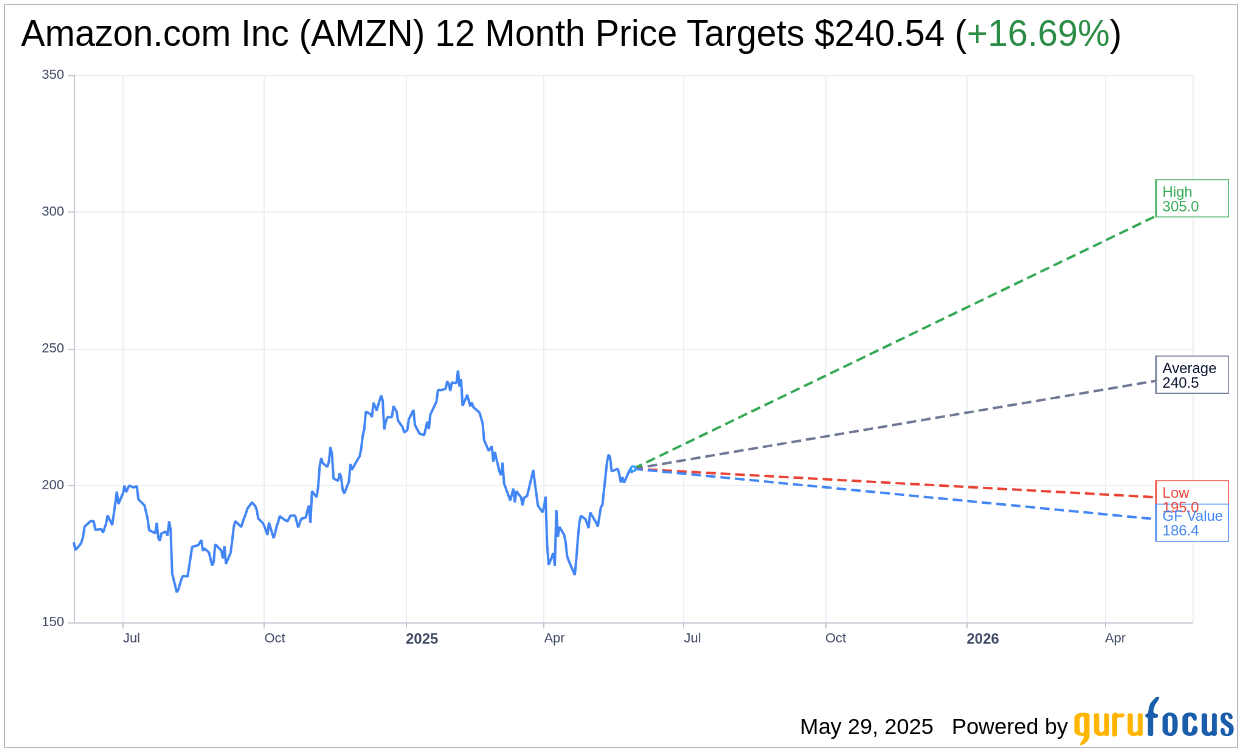- Amazon (AMZN, Financial) launches ZeroOne division, led by industry veteran J. Allard.
- Wall Street analysts forecast an average price target of $240.54 for Amazon.
- GuruFocus estimates highlight potential downside despite analyst optimism.
Amazon.com Inc. (AMZN) has ambitiously ventured into the realm of innovative consumer products with the launch of its new division, ZeroOne. Under the adept leadership of J. Allard, a pivotal figure in the development of Microsoft's Xbox, ZeroOne commenced operations in September 2024. With strategic locations in Seattle, San Francisco, and Sunnyvale, this new initiative could significantly influence Amazon's future stock performance.
Wall Street Analysts' Insight

Delving into analysts' forecasts, 67 experts have set a one-year average price target for Amazon at $240.54. This projection comes with a high estimate of $305.00 and a low of $195.00, indicating a potential upside of 16.69% from the current trading price of $206.14. Investors looking for a comprehensive breakdown can visit the Amazon.com Inc (AMZN, Financial) Forecast page for more detailed information.
Furthermore, consensus recommendations from 73 brokerage firms place Amazon at an average rating of 1.8, which corresponds to an "Outperform" status. This rating is derived from a scale where 1 is a Strong Buy and 5 is Sell, underscoring a positive outlook among analysts.
Understanding GF Value and Market Dynamics
On the other hand, GuruFocus presents a more cautious perspective. The estimated GF Value for Amazon in the coming year is pegged at $186.42, suggesting a potential downside of 9.57% from its current price of $206.14. This valuation reflects GuruFocus' fair market estimate, calculated based on Amazon's historical trading multiples, past business growth, and future performance forecasts. Detailed insights and data can be accessed via the Amazon.com Inc (AMZN, Financial) Summary page.
In conclusion, while Wall Street analysts exhibit optimism regarding Amazon's short-term growth, GuruFocus metrics caution investors to consider the potential for downside risk. Such insights underscore the importance of a balanced approach, assessing both market forecasts and intrinsic valuations when making informed investment decisions.
